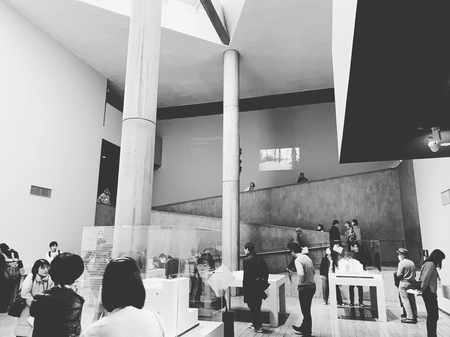20世紀はアクティビティーの時代
建築は人のアクティビティーから出来ていて、人のアクティビティーに可能性を感じる、とした。
アクティビティーを考える上で、20世紀はアクティビティーの時代だと思っていて、空間が流動的になり、アクティビティーをそのまま形どったような空間も現れた。
これは、サリヴァンの「形態は機能に従う」から機能という言葉が意識して建築に持ち込まれるようになり、機能を考える上で、人間に必要なアクティビティーが元になったからと推測される。
もともと「形態は機能に従う」は、それまでの様式建築に見られる装飾的な建築から自由になるための言葉で、建築の形態は、装飾で決まるのでは無くて、イメージはヨーロッパの石造りの神殿や教会、必然的な人間のアクティビティーが元になった機能により決まる、イメージはガラス張りのオフィスビル、ということ。
だから、20世紀以降、人間のアクティビティーが建築を支配していると言っても過言ではなく、だから、アクティビティーについて深く考えたくなる。
"The 20th Century is an age of activity"
The architecture was made up of human activities and felt the possibility of human activities.
When thinking about activities, I think that the twentieth century is the age of activities, and the space has become fluid, and a space that has shaped activities has also appeared.
It is speculated that this is because the word "function follows function" comes to architecture with the word "function follows function" consciously, and in order to consider the function, the activity necessary for humans is the origin.
Originally "form conforms to the function" is a term to be free from decorative architecture seen in the style architecture until then, the form of the architecture is not determined by the decoration, the image is a European stone temple The image is a glass office building, which is determined by functions derived from human activities and churches.
So it's no exaggeration to say that human activities dominate architecture since the 20th century, so it's tempting to think deeply about activities.


コメント